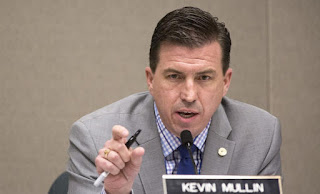The announcement came Friday and was quickly picked up by the Washington Post and then numerous other outlets, ranging from Yahoo to the MIT Technology Review.
Google's move, which takes effect next month, would seem to add impetus to a growing cry for more and faster regulation of the dubious clinics by state and federal regulators. Both the Food and Drug Administration and California have been slow to act although the problem has been known for years. (See here, here and here.)
Injuries, blindness and deaths have been reported globally as the result of the so-called stem cell treatments. No assurances exist that the substances being used are, in fact, stem cells.
The MIT article by Antonio Regalado noted that Google hauls in more than $110 billion annually in advertising revenue. The first sentence of his piece said,
"After brazenly taking ad money from health-care scammers, Google is finally saying no to ads for unproven stem-cell treatments."A UC Davis researcher, Paul Knoepfler, a national leader and pioneer in documenting the reach of the rogue clinics, said on his blog,
"I see the new policy by Google as a positive step and support them taking it. Perhaps some mainstream media outlets will follow suit and also adopt policies whereby they do not run these risky biomedical ads."He also noted,
"These ads and certain particularly risky clinics also are a real threat to the legitimate stem cell and gene therapy fields."Deepak Srivastava, president of the International Society for Stem Cell Research and head of the Gladstone Institutes in San Francisco, said in a statement,
“Google’s new policy banning advertising for speculative medicines is a much-needed and welcome step to curb the marketing of unscrupulous medical products such as unproven stem cell therapies.”The California State Medical Board has scheduled a Sept. 18 hearing into the clinics with an eye to strengthening regulation of treatments at the clinics.





